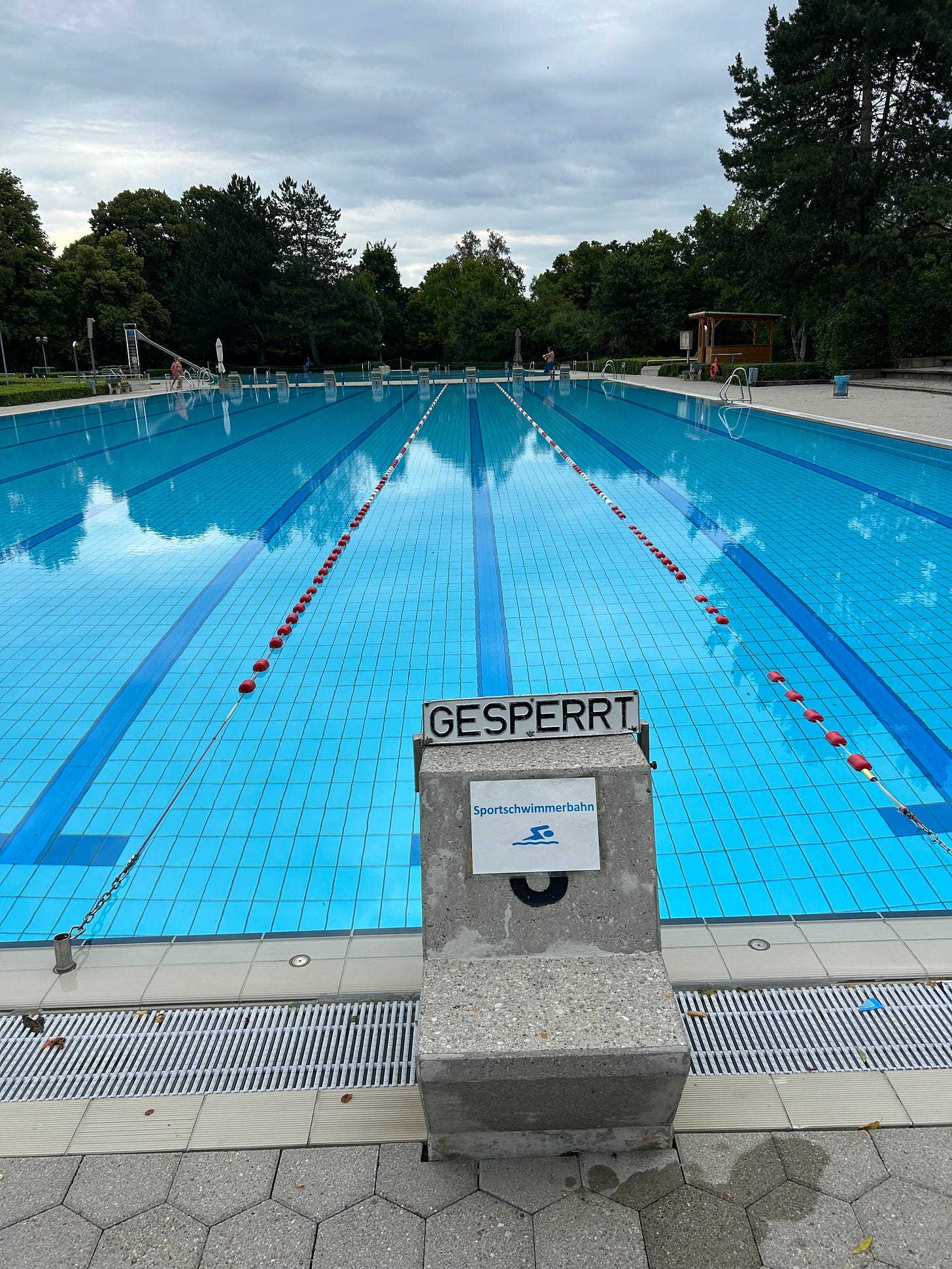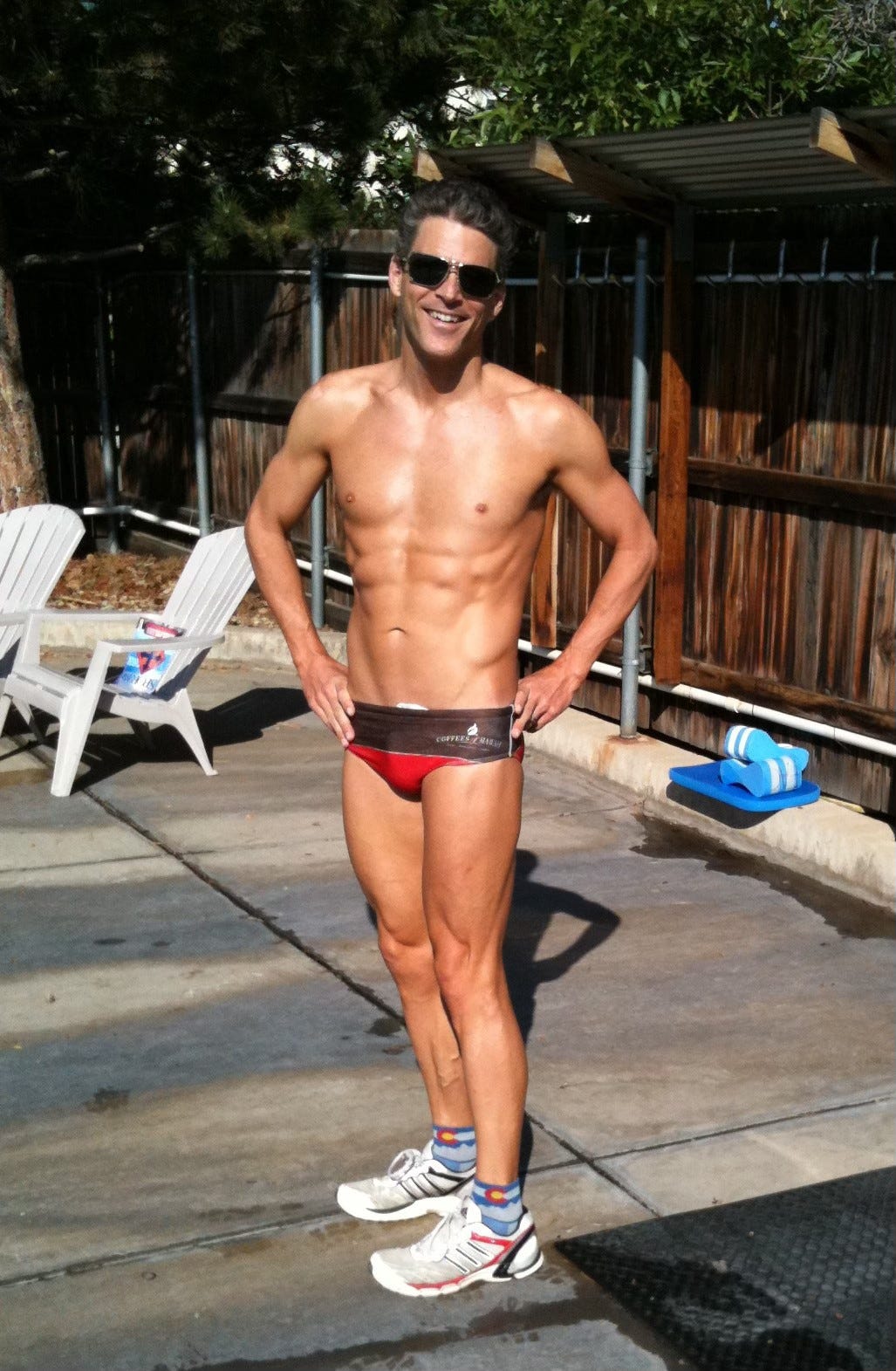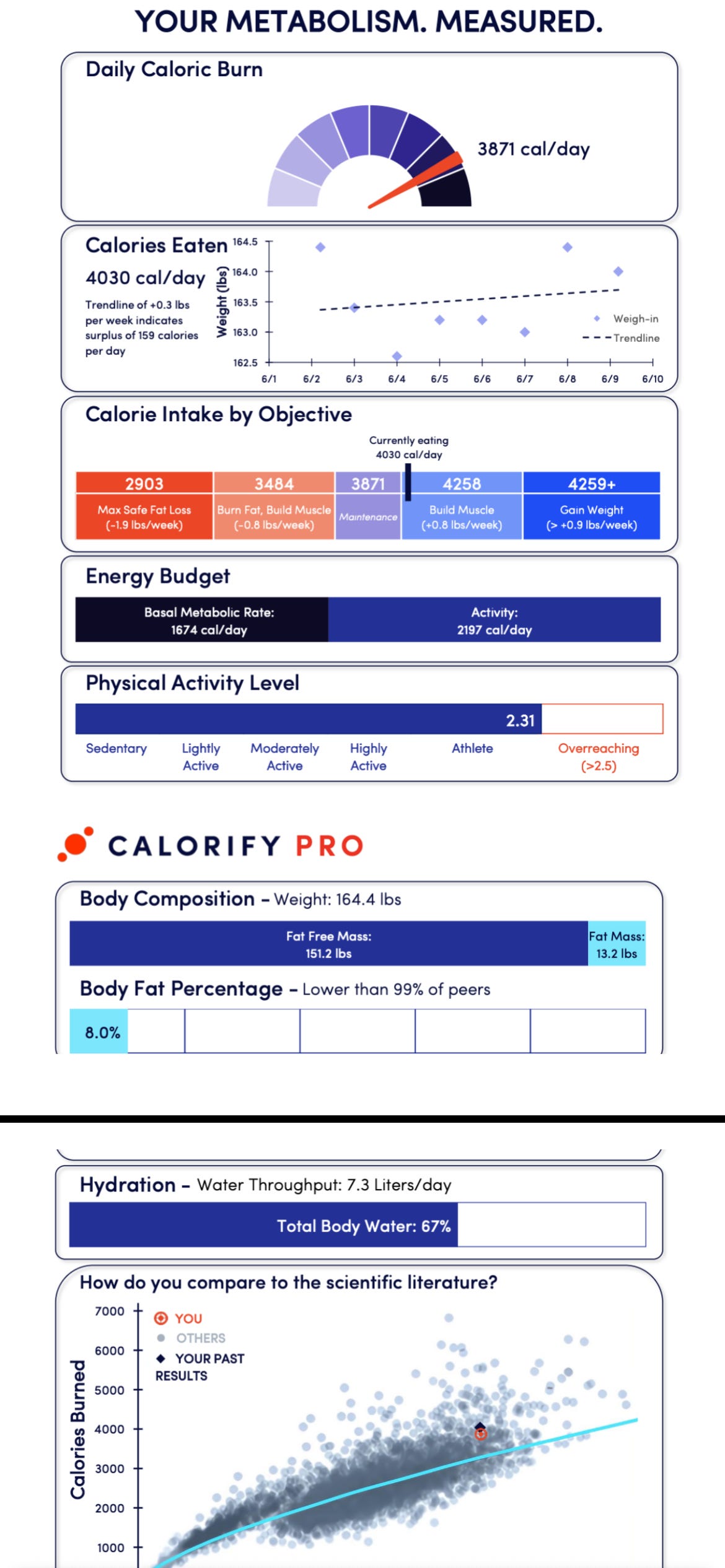Woke up at 2am, which wasn’t too bad considering it was my first night. The game now is to get through this first full day in Germany and get myself set on local time. Back home, I’ve been getting up in the 4s, so I’m only a couple hours out of whack.
Found a pool online and had a great swim. The pool had a sportswimmerlane and everyone let me do my thing (4,000 m continuous with fullsuit).
That was followed by a second breakfast, morning transfer closer to the race, bike build then an easy ride. Real camp starts tomorrow.
Ironman Race Weight
I’ve raced well (elite podiums) at a range of weights and fatigue states. In other words, I’ve had success both heavy & lean as well as fresh & tired. Even managed a great race at IM New Zealand when heavy & tired (an unexpected combo to prove effective).
As Scott Molina says about tapers…
When you’re really fit…
It doesn’t matter.
When it comes to race weight, I explained my view in Race Efficiency Training.
Don’t think about weight. Think about goals.
Anabolic: build self up. Best done in energy surplus. AKA, if I’m going to make a mistake then I’ll eat a little more.
Nils van der Poel calls this the Eating Season. Nils’ book is an accurate description of what it’s like to do a huge volume of endurance training. Nils had years of this work. This season, I had a month (May 2025, 103.5 hours of mostly Green training).
Race Preparation: following a big block, use a slight energy deficit to bring body composition down to race goals. Ensure race specific training is well fueled and recovered from.
If you get this right then weight will be the result of a smart training strategy. It won’t be a specific goal. This is healthy and sustainable.
How might you know if you’ve gone too far?
At the heavy end, I feel lousy once I get over 80 kg. Mood is sluggish because I am overeating. Just under the too heavy point, my training performance is strong, and I am powerful. I use 79 kg my top end.
At the light end, the indicators to watch are body temperature and hunger. My warning lights begin to flash under 74 kg.1
The classic symptom in underfed athletes is being cold all the time. I see you at the pool. Why are you cold? Because there’s no fuel in the fire, so to speak. If you’re already lean, and cold, then you’re giving gains away.2
In certain psychological profiles, hunger feels good. As many of us know, hunger can be managed via high intensity (cortisol release) or excessive stimulant intake (black coffee was my beverage of choice when I was often hungry).
Careful with that.
The combination of:
Lean & depleted.
Intensity skewed program.
Frequent ingestion of stimulants.
…is the fastest way to nuke an athlete.
How will you know you’re at risk. Lionel Sanders was in the news recently for talking about his sex drive disappearing.3 That’s a reliable sign. Take an easy week, if your sex drive doesn’t rocket (literally) then you’ve gone too far.
The approach I recommend avoids this risk by settling at a Strongest Training Weight for most of your year and taking a proper off season.
How will you know you’ve achieved race weight?
If you have similar psychology to my peers (and myself, and Lionel) then you will try to lose weight beyond what’s optimal.
Remember this point.
You are likely to overshoot, especially if you are young and not experienced with the downsides of getting too light.
Never Lose The Last Kilo
The indicator that works best is a simple question.
What would happen if I lost another kilo?
Answer that question thinking about how you would feel.
Getting too light results in feeling hungry all-the-time, cravings and binges. As a younger athlete, that would spiral into cycles of binges followed by excessive exercise in an attempt to burn off excessive intake. The hamster wheel of excessive everything. Riding the hamster wheel is a maladaptive approach, avoided by holding on to the last kilo.

Another indicator of risk is body weight becomes stable.
Isn’t stable body weight the goal?
Yes, but the goal is a stable average over time. When I’m fueled and hydrated properly, there is significant daily variation. One of the ways I become stable is when I’m depleted. You will see this with runners, ectomorphic builds and athletes with a desire for chronic weight loss.

From that week in June, I saw downside to getting lighter. I kept nutrition tight through Boulder 70.3 then started eating more.
What do I mean by tight and more?
I explained what tight nutrition looks like in the Race Efficiency article.
No sports nutrition on easy days.
Water only during long swim sessions, with real food afterwards.
Eat breakfast after short morning sessions, not before.
High-protein salads for dinner, 3-5 nights a week.
More is:
Breakfasts before & after most of my short morning sessions.
More meals with balanced macros, meaning more starch.
Be willing to eat out 1x per week with my family.
More of my wife's baked goods.
More does not mean eating more sugar.
The race specific training has my sugar intake well above what is healthy. On my longest specific days, I eat more than 3,000 kcal of sugar. I balance those days with sessions (and seasons) where I limit sugar intake. This is another topic Lionel was in the news about (last winter).
If your fat oxidation is poor, and you are depleted, then bad things happen when you restrict energy intake and train big. Fortunately, my fat oxidation is great (now) and I eat a lot (year round). I’ve taken three years to rebuild the metabolic fitness I had as an elite (see Chapter One, specifically The Second Framework: Metabolics).
More ideas for you are covered in our eBook (Nutrition chapter, The Tired Athlete (by John) and the case study on Adrenal Burnout & Overtraining). You can find a two videos on REDs over on my YouTube channel.
Pay attention to how you feel and remember to focus on training quality, not body weight.
Endurance Essentials eBook page
I’m typing this in my underwear because I’m generating so much heat in my hotel room. Back home, Monica and the kids are relieved because they can sleep with the temperature above 67F because I’m out of town. When you are in race shape, and properly fueled, you will be warm all the time. All systems are firing.
Most athletes are not motivated by performance. Undereating is one example of this phenomenon. Lack of intensity control is another. Inability to develop an effective recovery strategy another. The compulsion to train is a powerful force.
Consistency in training, and being reasonably sane with everything else, goes a long way.
Worth noting Lionel’s been racing well for a long time. He lives in Tucson (insanely hot right now). He might be dealing with: long season, lots of fast racing and a desire to stay exceptionally lean year round. History tells us he will sort himself and be back crushing it.








Looking good, buddy! Rip it and have fun!
Great stuff. “Crush people’s dreams” - the apple hasn’t fallen far from the tree!!!